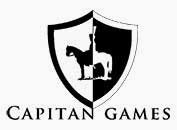Terrain and optional rules for Barrosa/Chiclana
There are many maps, English, French or Spanish, for the area were the battle of Chiclana/Barrosa was fought. The best maps I have found are the one included in Fortescue's 'A History of the British Army' (1917) available through Napoleon-Series, and the map of the Arteche's map included in the CD of the Cartografía de la Guerra de la Independencia, a fragment from which is presented below. The next decision was the area to be depicted in the table. As I want to play the 'English battle' as apposed to the 'Spanish battle' fought near the Almansa creek (towards Cádiz), the chosen area was the surrounding Barrosa Hill (or Cerro de la Cabeza del Puerco), so the table will present the following aspect:
The next decision was the area to be depicted in the table. As I want to play the 'English battle' as apposed to the 'Spanish battle' fought near the Almansa creek (towards Cádiz), the chosen area was the surrounding Barrosa Hill (or Cerro de la Cabeza del Puerco), so the table will present the following aspect: Optional rules
Optional rules
Added to add spice to the game and for fine-tuning the Lasalle rule book to the specific Scenario.
The wavering Lapeña (Scenario rule)
According to Oman, Lapeña did not support the British during the battle and only the Cruz Murgeon’s brigade, entrusted to Graham, fought along his allied. However, according other accounts (Fortescue, Arteche) the Begines’s brigade did participate in the fight against the Dermoncourt’s outflanking force, so that brigade is included as Reinforcements.
To simulate the Lapeña’s wavering efforts, the Reinforcement arrival test (p. 91) is carried out with an additional -1 modifier. The Reinforcements will arrive deployed at the C3 end road.
The irregular flankers (Scenario rule)
In the actual battle, part of the Barnard's flankers (4 coys. of 3/95th Rifles) and 2 coys. from the 20th Portuguese fought in skirmish order to cover the deployment of the Wheatley’s brigade, whereas the remaining Barnard elements (2 coys. of the 47th Foot) acted as supporters for the British artillery. To simulate this behaviour:
(a) All the light elements of the Wheatley brigade (Barnard's Flankers and the 2 coys. of the 20th Portuguese) have been amalgamated into a single large unit, made Irregular as per the 'Creating Irregular Units' Optional Rule (p 74), and whose statistics are V/I/SK3 (+)
(b) This unit will use the 'Half Battalion Deployed' Optional Rule (p 74) slightly modified: the unit may break off four (instead two) bases as SK bases, to enhance skirmishers for other friendly regular infantry, while retaining two (instead four) bases to function as a small unit.
(c) The four skirmish bases will be used as Irregulars fighting in line when necessary. However, a gap of until 1/2 BW will be allowed between adjacent bases to increase the front of the unit.
(d) The SK power of the Wheatley's brigade will be not marked with SK bases.
The last Optional rule is a sort of Lasalle heresy, because the ruleset does not allow for skirmishing activity. I hope that it will work!
P.S. As the bicentenary approaches, there is a growing interest in Barrosa/Chiclana. The English magazine Miniature Wargaming has started a series on the battle, to be published in several issues from 334 onwards.








































































